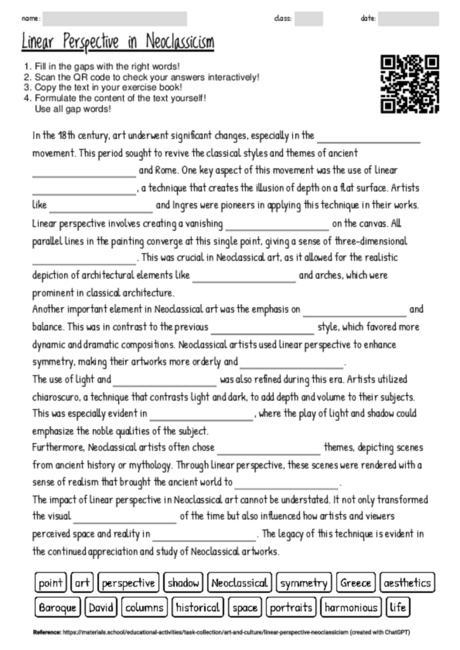Linear Perspective in Neoclassicism
Cloze texts, such as the one created on Neoclassical art and linear perspective, serve as an effective tool in engaging students, particularly those between 12 and 16 years old, in active reading and comprehension exercises. This type of text encourages learners to focus on key concepts and terms, enhancing their understanding of the subject matter. In this particular text, the selective omission of key terms related to Neoclassical art not only tests students' knowledge but also prompts them to think critically about the context in which these terms are used.
The text provides a succinct overview of the Neoclassical period, focusing on its artistic techniques and themes. By using simple and concise language, it becomes accessible to younger readers while still conveying complex concepts like linear perspective, chiaroscuro, and the contrast between Neoclassical art and its predecessors. This approach helps in catering to a diverse range of reading levels within the target age group.
Incorporating historical and artistic contexts, the text offers a multidisciplinary approach to learning. It ties together art history, techniques, and the cultural shift from Baroque to Neoclassicism, thus providing a comprehensive view of the subject. This holistic approach fosters a deeper understanding and appreciation of art history among young learners.
The text also serves as a foundation for further discussion and exploration in the classroom. Teachers can use it as a starting point for discussions on art history, the evolution of artistic styles, and the impact of historical contexts on art. Additionally, it can be paired with visual aids or actual artworks to enrich the learning experience.
Overall, the use of a cloze text on Neoclassical art and linear perspective demonstrates the versatility and effectiveness of this tool in educational settings. It not only aids in knowledge retention but also stimulates curiosity and critical thinking among young learners.

